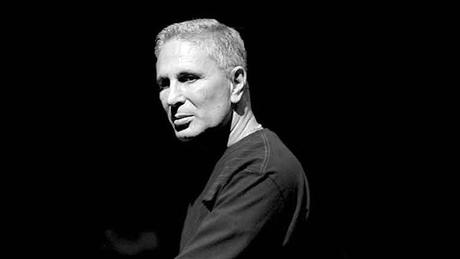by Paul J. Pelkonen

Composer John Cortigiano: his Symphony No. 1 was played at the New York Philharmonic
for the first time in 27 years. Photo © Sony Classical.
Pride Month started in New York Saturday night, and the Philharmonic responded accordingly. Staff members handed out pins with the orchestra’s spidery logo emblazoned against the rainbow Pride flag in black. On the concourse of David Geffen Hall stood huge displays: sections of the AIDS Memorial Quilt, which was first shown on the National Mall in Washington D.C. in 1987. Inside, the Corigliano work was prefaced with a pair of pensive classics by Brahms and Mozart. The musicians, including Philharmonic music director Jaap van Zweden, sported the Pride pins.
The Brahms Tragic Overture was an appropriate start to the concert, with the orchestra playing under an enormous, looming concert lighting rig that was there for rehearsals of next week’s David Lang opera. Mr. van Zweden is good at drawing out the peculiar way that Brahms writes orchestral voicings. Grouped woodwinds, noble horns and strings create a mellifluous, full-throated song eerily like a massed choir of human voices. The Overture spun forward in its perfectly balanced construction, a symphonic movement that only lacks three brothers to make it complete.
Next, a Steinway and (unusually) a straight-backed chair were placed for soloist David Fray in Mozart's Piano Concerto No. 24 in C minor. Of this composers two concertos written in a minor key, this is the more tragic and internal, a series of sad threnodies for the keyboard answered by the tutti players, Mr. Fray is an artist unknown to this writer, but he played with an appropriate lightness and delicacy of touch that suited the late-rococo figuration of the final movement.
At the start of the second half, Mr. Corigliano came onstage to introduce his work to new listeners. He painted a bleak road map, explaining how certain key themes were references to souls he had known, reaped too early by the plague. A tinkling offstage piano was for a teacher of his who loved Albeniz, a central dance movmement reflected the terror of AIDS-induced dementia and a cello melody for his friend Giulio opened the finale.
This stark and uncompromising piece started with a crie de couer, a monstrous A chord in brass, percussion and strings. It's sound wave was by the addition of a metal plate struck hard with a hammer. This terrifying sound returns again and again, the raising of an alarm as the crisis mounted. The pulse emerged, the human heartbeat at first steady and then barrelling like a freight train down upon the listener in a frantic orchestral roar. Slow strings announced the arrival of the Albeniz piano theme, tinkling from offstage and then played by the same soloist from among the orchestra.The movement ended in powerful, apocalyptic fashion carefully controlled, bottled and stoppered by Mr. van Zweden.
That movement was barely preparation for what followed,a terrifying Tarantella. Mr. Corigliano, recycling a theme from his 1970s work Gazebo Dances, subverts that traditional Italian dance. Strummed mandolins trill, answered and amplified by plucked and strummed violins. Suddenly the music careens into a fortissimo passage as if the listener is suddenly dropped through a trapdoor onto a backwards roller coaster. This movement had great emotional intensity, reflecting the idioms of both Mahler and Shostakovich but in a way that was lyric, Italianate and uniquely the voice if Mr. Corigliano.
The final movement offered some serenity in Giulio’s Song, a passage for solo cello played by Carter Brey) and eventually supported by his desk ate, this sad theme acted like the trigger of a massive final Rondo, eventually giving way to a rising passage that climbed toward a major key. The A note returned again and again, more uplifting each time it was heard. Hope is a beautiful thing. It was also the last thing that Mr, Corigliano pulled out of his Pandora’s box of orchestral tricks. As presented here by Mr. Van Zweden and this orchestra, hope was a very fine thing indeed.
Become a Patron!
Superconductor is free for everyone to read but it does cost money to produce. If you enjoyed this article, it's time to click over to Superconductor's Patreon page, and help support the cost of independent music journalism in New York City. Our Patreon program starts at the low cost of just $5 per month, less than a fancy cup of coffee in this town.

